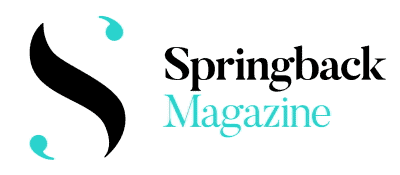Springback Academy 2017
Feature

Caring for the Swan: A precarious moment for dancing
‘Darkness – Spotlight – Precipice – Monument’: the four large placards placed carefully on stage in Marten Hansen’s Monument present themselves frankly, like object-labels in some gigantically-proportioned museum. To what do these labels refer? Their size seems to suggest we think big, beyond the timespan of the performance, beyond the walls of the theatre… Hansen’s cabinet of curiosities is awaiting the arrival of a significant specimen. Could it be institutionalised contemporary dance itself?
I come from the States; at Spring Forward, I was among the few hailing from beyond the borders of the EU. The American 20th-century art-dance adventure – which saw, if I may code it so strongly, the bright flame of (post)modern experimentalism definitively doused by rapid and pervasive neoliberalisation – highlights the precarious position of dance as an art form and its dependence on very specific political and social conditions. In Europe, such conditions persist, but there is a feeling that it’s all teetering on a precipice. A certain darkness may be approaching.
As funding continues to be cut, and public taste turns against complexity, cultural institutions rush to Twitter, to Facebook; they hire public relations teams, talk about ‘audience development’, and so forth. More buzz, more visibility, more reach! We are eager to prove our value. It is doubtless necessary: today more than ever, cases are won with numbers, not with words or dances. But there is a tension between this activity and the activity of the artist, whose worth is and must be both contestable and unmeasurable.
Art: who needs it?
The works which touched me the most at Spring Forward were those which seemed to deal with this question of worth. The dancers of Mikhail Alzghair’s Displacement stare out into the audience, arms raised in a gesture of surrender, seemingly daring us to categorise, evaluate, or assign meaning to their movement. From what position do we judge these men, and with what criteria?
Francesca Foscarini’s Vocazione all’Assimetria seemed likewise addressed to the audience as a challenge. Expressive movements and gestures, taken out of context and inserted into choreographies, executed rather than lived: this defamiliarisation and flattening stages the dancers’ bodes as a kind of negative space. Asking us to close our eyes, they establish their distance from us, their power over us, their essential mystery and irreducible otherness. At one point, a scream of – what? I couldn’t parse its content, but I felt something of myself in this scream, or perhaps something larger than myself.
The melancholy nihilism of high postmodernity, temporarily deferred by the anarchic promise of the internet, seems once again relevant, especially as the internet reveals itself as yet another mechanism of consumerist subjectification. The 20th century stands as a monument, proud as Pavlova, a fiercely turbulent sweet spot wedged between eras of information scarcity and information overload, when craft, professionalism, resistance, originality, provocation, expression, effectiveness, intelligence, and resourcefulness could all unproblematically co-habit the same artistic practice.
Today, charisma is a commodity, resourcefulness is exploitability, and the provocative has been deprived of its resistant force. How do we move in this muddle? Some pieces at Spring Forward seemed ready to engage with the contemporary situation in all its complexity. As programmers, critics, and committed audience members, our job is to give space for the artistic project, whose mandate seems to be rapidly shifting. Perhaps, the only way to resist commodification is to place the art of the future beyond evaluation, celebrating its sheer presence without asking it to perform a service. The place of the institution in such a paradigm would have to be radically re-negotiated. Are we ready to embark on such a journey?

